Kathmandu, Nepal
December 14th – 16th 2010
Power-cuts are part of everyday life in Nepal, I found out. The hotel had a schedule showing what times the power would be cut each day, usually 4 hours in the morning and 4 hours at night. Incidentally, those are also the times most people are still in their rooms. The timing is terrible. I would wander outside during the day, come back at night and hope to watch a little TV but the power would shut off in the middle of a terrific chick flick *cough cough* I mean, action movie. Anyway, I didn’t like the power-cuts but it is what it is.
Thamel, the area where I (and most foreigners) tend to stay at, was littered with shops selling trekking gear, Buddhist items, and clothing. There were also a large number of travel agencies there. The one nice thing was the variety of places to eat. I got to eat some Korean and Japanese in addition to my favorite, local Nepali ‘dhal bhaat’, which is rice, dhal, curry, vegetables and pieces of chicken or mutton.
Spent a day checking out the magnificent Old City (or ‘Kathmandu Durbar Square’). I got there thinking I would independently guide myself through the entire place but a guide there was very persistent in trying to get my business and I decided to let him guide me, which turned out to be a very good decision as he was a terrific guide, sharing a ton of interesting information I wouldn’t have gotten myself. I wanted to see the Living Goddess Kumari appear in her window but I didn’t want to wait an hour for it.
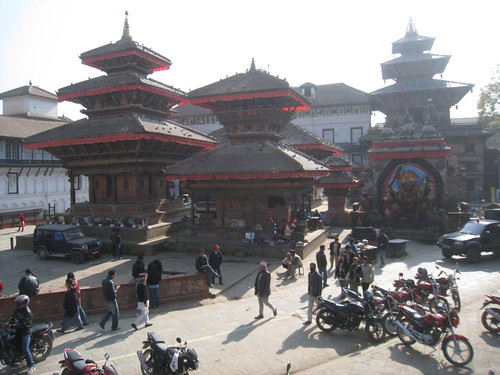
(Part of Kathmandu Durbar Square. It’s a lot bigger but I couldn’t get a nice wide-angle shot of the entire square.)
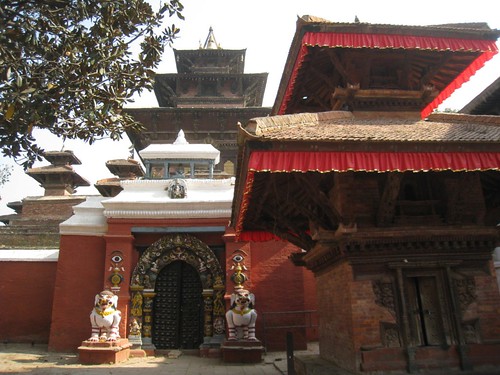
(The Slaughterhouse Temple, in the back, where the new Kumari is selected when the old one “expires”.)
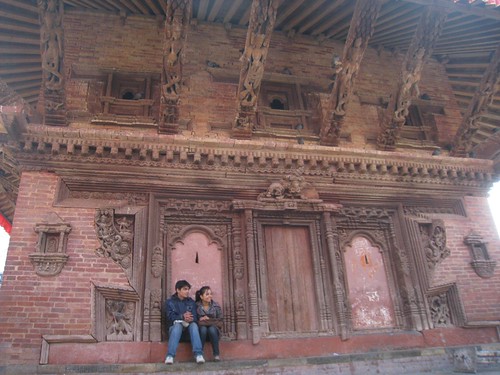
(A pair of lovebirds sitting under the “Karma sutra” temple. All the carvings are of the erotic nature.)
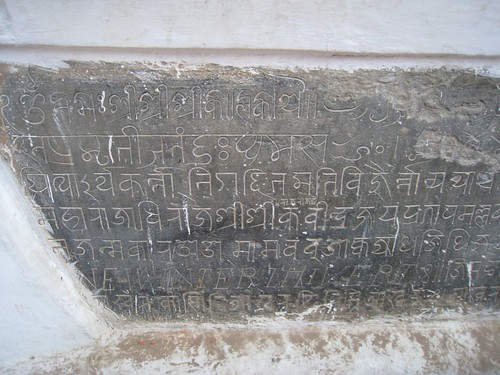
(The King of Nepal was looking for an intellectual equal in the city. He wrote down phrases in 15 different languages on this wall and whoever could read them all, was an equal.)
What’s interesting about the selection of this living goddess is that the priests have a special ceremony once the current goddess reaches puberty and is ‘retired’ and these priests have a ritual to select a new goddess. They will sacrifice 50 goats and 50 buffalo at a special temple which is only opened once a year (and also one of the most beautiful temples in the Old City), and spill the blood of the animals everywhere. They will choose a little girl from who-knows-where and as she walks up the temple, if she isn’t fazed at all by the slaughter and blood everywhere, she is acknowledged at the next Living Goddess. And thank goodness they send the girl to school in addition to her duties as Living Goddess. It would be sad if they used her for religious purposes and leave her helpless when her tenure ends.
Another cool item within the Old City is a statue of the Hindu God of Death. Legend has it that people are afraid to tell a lie in front of the statue for fear of vomiting their guts and brains out if they do. Hence, the place was used as a confessional of sorts. The local police even have their headquarters set up right beside the statue and threaten criminals with it.

(Do not tell a lie in front of this statue or you will vomit your guts out and die. But look at him, he looks so friendly…)
I also spent a separate day walking to and checking out the Swayambuth Temple, a magnificent golden Buddhist temple at the top of a steep hill. As with any temple, the steps and area surrounding it is littered with souvenir stalls and beggars. There were monkeys everywhere. I liked the giant pair of Buddha eyes painted on the stupa, representing the all-seeing Buddha. There was a good view of Kathmandu from the top but instead of a beautiful city against a beautiful Himalayan background, it was more of an ugly, polluted, smog-filled city against a hidden cloud-and-smog-covered Himalayan background.
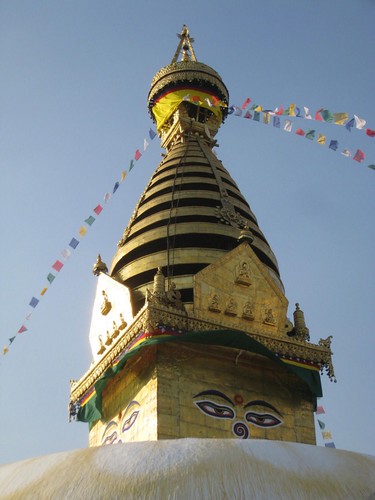
(A common image in Buddhist culture, the “Eyes of Buddha” are omniscient. He looks suspicious.)
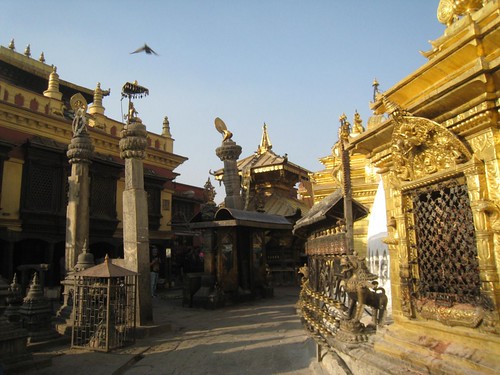
(Walking around the golden Swayambuth Temple.)
I had to apply for my re-entry permit to India on my last day there. I had left quite late that morning, not knowing the visa center’s hours. I got there a few minutes past noon, which is when the visa center closes. I pleaded with the guard to let me in and when he found out I was originally from Malaysia, we got into a Bahasa Malaysia conversation. (There are a lot of Nepalis who are currently working or used to work in Malaysia. He worked there for 7 years.) He told me that I could offer him a small bribe and he would let me in. I had no choice so I offered 50 rupees ($1, I got away cheap) and I was allowed to go in and apply. It was fortunate because I found out the visa center was closed the next day for an Indian holiday and the weekend followed so it would also be closed then, meaning I would have had to stay 4 additional nights in Kathmandu had the guard refused my entry.
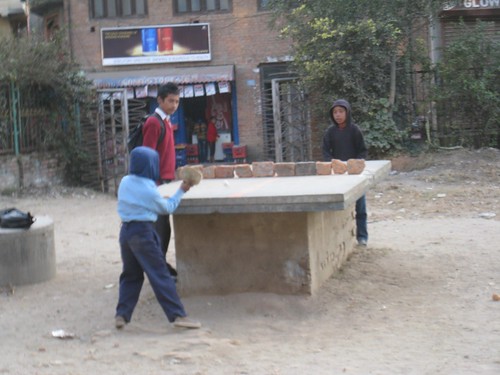
(Improvised ping-pong table.)
When I returned that evening to collect my passport, I ran into the ‘weed guys’ at the visa center as well. They were doing some of their own applications to get into India so we said hello, talked a bit, then said goodbye, probably for good. I had booked a tourist bus back to Siddhartha Nagar for early the next morning so everything worked out in the end.
I guess it makes sense from their perspective that they would cut the power at peak times. I hate that some hostels only have hot water for a few hours in the morning, when I prefer doing all my stuff at night to avoid crowds.
So I take it you preferred Nepal to India? I haven’t heard any horror stories.
I was only here for about 8 days, couldn’t find enough material to complain about. 😮